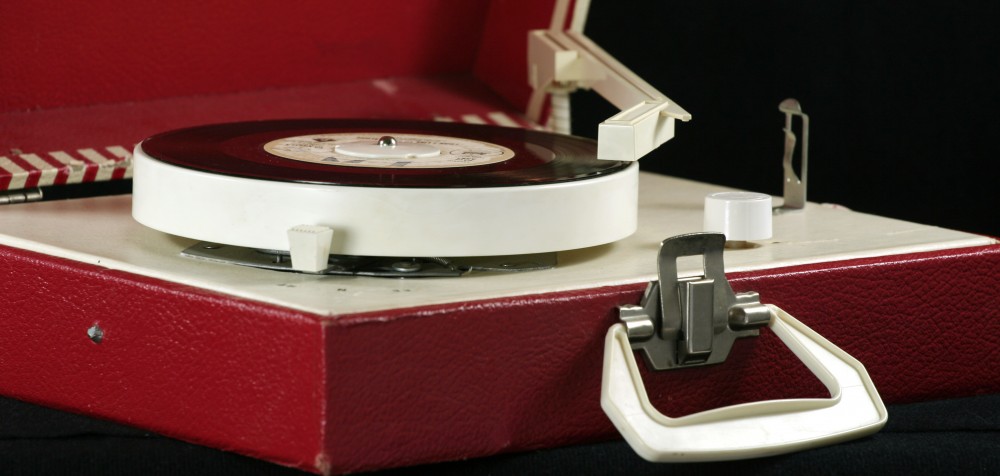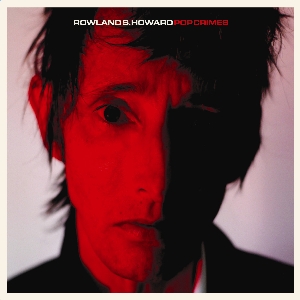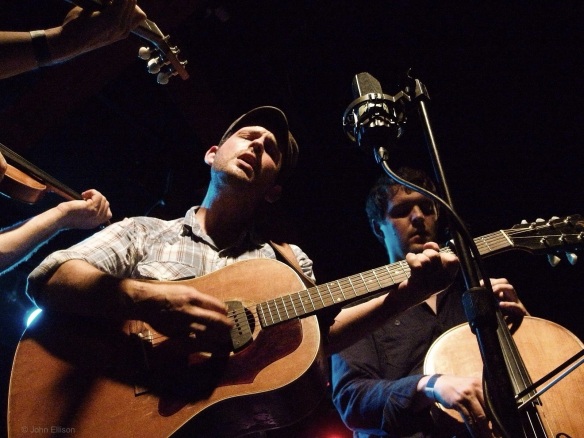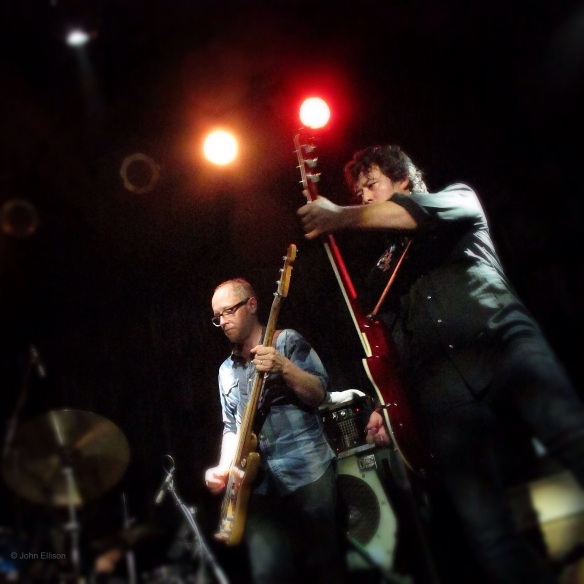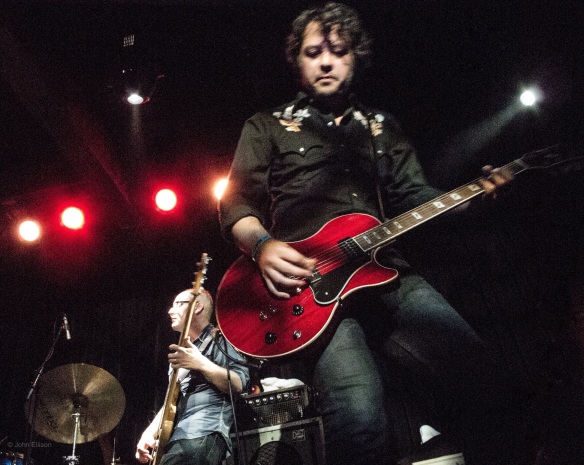
The legend has edged out the music. Maybe only just, but it’s happened. Bob Dylan, the legend, is what audiences want to see today, and talk about, loudly, especially while the show is underway. The fact that Dylan’s audiences are mostly as old as Bob, with fewer younger faces in each audience, the majority come to see Dylan and shout out inane commentary at the top of their lungs about irrelevant facts from their own lives. There’s nothing like the mood-killing power of an old married couple shouting to one another over the start of a new song about which Dylan record was their favorite, in 1966, while each sitting in a $200 seat as the dwindling number of the faithful sit silently cursing themselves for not being strong enough to skip the show. Throw in some booze and, combined with hearing problems, you wind up with something resembling a bizarre, clueless carnival mashup of music and town-hall banality.

Which is tragic. There was a time when Dylan was the mountain top. Being at a Dylan show was a religious experience, something most fans thought they’d never get to experience in their lifetimes. Maybe once, but never twice. There were several points in Dylan’s career when we thought it was over. Probably a few when Dylan thought it was over, too. Then he hit upon the lifestyle of the perpetual-motion entertainer, with his never-ending tour.

And as the years have spooled out, and the songs have been recast over and over into endless new forms for endless morphing performances, shape shifting between styles, with audiences either grumbling about his “hits” being unrecognizable or praising his freshness for reinterpreting his “hits” for these ever more insane times, there’s less and less to talk about when it comes to Dylan’s music. The new records are still coming out, like “Tempest” (Columbia, 2012), but that doesn’t help the conversation much because every new record gets lost in the debate about Dylan retiring. “Tempest” has been the latest to fire the debate, with some critics trying to link it, bizarrely, to Shakespeare’s “The Tempest,” and Shakespeare’s stage and writing career, with all the pointlessness such an exercise might imply. It was just one of an increasing number of Dylan DOA debates.

Dylan just completed a three-night stand in Seattle, at the Paramount, playing to full houses, to audiences who obviously didn’t think to talk through all their banal Dylan existential questions before the band walked onto stage. I was there every night, surrounded by people oblivious to the fact that they were at a live show, with other people, people they didn’t know, and who immediately launched into inane song-by-song commentary about when they first saw Dylan, where they saw him, who they were dating back in the day, and why his music perfectly fit their lives and youthful times. Everyone deaf as a post and having to shout at the top of their lungs every painful, pointless detail.

As if to signal that Dylan didn’t seem to care that much for his music either, he played the same set all three nights. One hour on, then a ten-minute intermission, then a second hour, then two “encore” songs, then off he went to his hotel, presumably to have a more interesting evening than we did. Not one single change up. He didn’t play guitar, of course, preferring instead to stand behind a bank of microphones or to sit at his piano. Moving about the stage he struck strange, almost comical “poses,” I don’t know how to better describe them. Hand cocked on his hip, wide stance, hop stepping unnaturally between the drum riser and the piano. Dylan wears costumes these days reminiscent of a riverboat gambler, with tuxedo pants and long coat, and what looked to be spats, or some kind of two-tone boots. The stage lighting is kept so dim there were times when you had to follow his hat floating about the stage gloom. Dylan’s voice is his voice, worn and raspy, which sounds more connected when he feels more connected.

Bob Dylan changed so many things in popular culture it’s impossible to make the list sound fresh. It’s what made him the high priest of popular culture. Now that status has become the all-consuming image we see. It’s why we pay the money to be in the room with the man. Legends are powerful, attractive, and expensive. But it felt a little sad last weekend, that people were piling into the Paramount night after night to use Dylan as a memory prompt, a musical mnemonic device to dig out long-faded irrelevant personal trivia, and then to share that trivia, intentionally or unintentionally, with uninterested total strangers, in public. Such is the power of legend.

Maybe it all comes down to this: Dylan can do anything he wants, and this is what he wants to do. But what do we want, as his fans? Maybe we no longer deserve his music and the tremendous potential it’s had in the past because some of us stopped searching years ago for bigger things in our lives and the music we loved. Cliches destroy lives as much as they destroy art. In this twilight time of Dylan’s performing life, he’s going to work every night to do what he knows how to do. It’s his fans, those who once sat silently enraptured at what was unfolding before their eyes, who are killing Dylan’s art because it’s the audiences who are becoming cliches of real fans. Either way, it feels less important to see Bob now, when it should feel more important than ever.
 Forget the famous erratic behavior, the cold unpredictability, the reckless early experiments with LSD, the Mandrax tranquilizer cocktails, the Brylcreem, the detuned guitars, the guitars covered in paint and mirrors, the fights with friends and family, the rudeness, the self-imposed seclusion, the willful aloofness, the misplaced jokes, the tiresome media diagnoses; forget the family history, the well-documented parties and the summer picnics, the class comparisons, the skipped check-ins, the ignored sound checks, the uneven gigs, the “scenes”; forget the angry girlfriends, the angry promoters, the angry studio executives, the bitter bidding wars, the deals gone bad, the deals unexplained and then abandoned; forget the unfulfilled expectations, the unattainable goals, the forgotten futures, the
Forget the famous erratic behavior, the cold unpredictability, the reckless early experiments with LSD, the Mandrax tranquilizer cocktails, the Brylcreem, the detuned guitars, the guitars covered in paint and mirrors, the fights with friends and family, the rudeness, the self-imposed seclusion, the willful aloofness, the misplaced jokes, the tiresome media diagnoses; forget the family history, the well-documented parties and the summer picnics, the class comparisons, the skipped check-ins, the ignored sound checks, the uneven gigs, the “scenes”; forget the angry girlfriends, the angry promoters, the angry studio executives, the bitter bidding wars, the deals gone bad, the deals unexplained and then abandoned; forget the unfulfilled expectations, the unattainable goals, the forgotten futures, the  heartbroken well-wishers, the obsessive fans, the myth makers; forget the rules, the grief, the blues, the rejection, the royalties spent, the percentages, the bank accounts, the estate; forget the parents, the best friends, the enemies, the bandmates, the solitudes, the public displays, the unanswered questions; forget the labels, the nicknames, the legends, the fame, the falls from grace, the famous friends, the infamous detractors, the clueless critics; forget the Pat Boone interview, the Dick Clark interview, the John Peel interview, the Rock and Roll Hall of Fame; forget the “retirement,” the random sightings, the diabetes, the home in St. Margaret’s Square, the death from pancreatic cancer, the sad picking over of his possessions, and the bandwagon tributes. Forget it all. None of that matters now.
heartbroken well-wishers, the obsessive fans, the myth makers; forget the rules, the grief, the blues, the rejection, the royalties spent, the percentages, the bank accounts, the estate; forget the parents, the best friends, the enemies, the bandmates, the solitudes, the public displays, the unanswered questions; forget the labels, the nicknames, the legends, the fame, the falls from grace, the famous friends, the infamous detractors, the clueless critics; forget the Pat Boone interview, the Dick Clark interview, the John Peel interview, the Rock and Roll Hall of Fame; forget the “retirement,” the random sightings, the diabetes, the home in St. Margaret’s Square, the death from pancreatic cancer, the sad picking over of his possessions, and the bandwagon tributes. Forget it all. None of that matters now. Just listen to the music, get lost in his songs. All of Syd Barrett’s solo records have been released on vinyl once again: “The Madcap Laughs” (Harvest/Capitol, 1970), “Barrett” (Harvest/Capitol, 1970), and “Opel” (Harvest/Capitol, 1988). When you hold one of these records, when you give it a spin, the years roll away to reveal a brilliant songwriter and a body of songs as fresh as any being written today. It’s like time travel, without bags or worries.
Just listen to the music, get lost in his songs. All of Syd Barrett’s solo records have been released on vinyl once again: “The Madcap Laughs” (Harvest/Capitol, 1970), “Barrett” (Harvest/Capitol, 1970), and “Opel” (Harvest/Capitol, 1988). When you hold one of these records, when you give it a spin, the years roll away to reveal a brilliant songwriter and a body of songs as fresh as any being written today. It’s like time travel, without bags or worries.